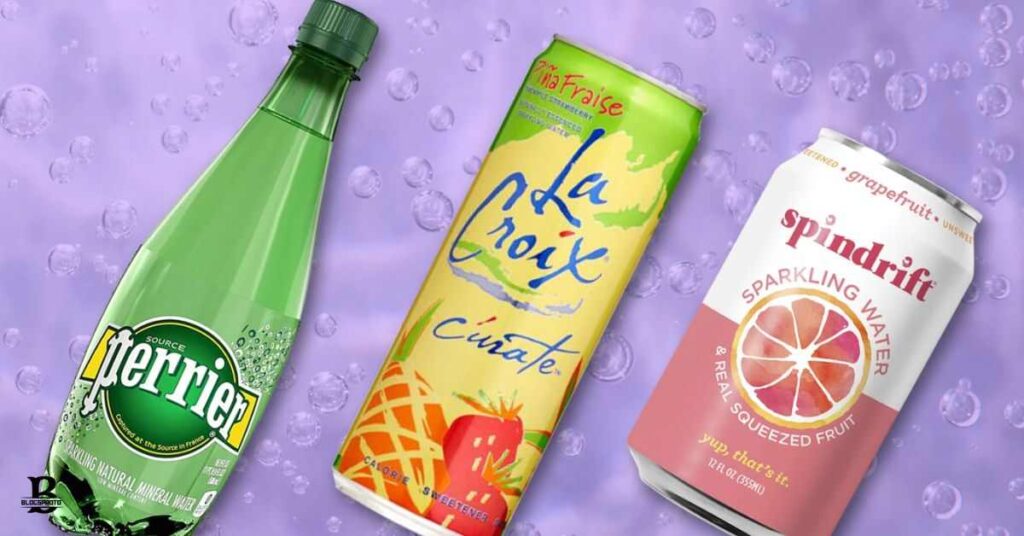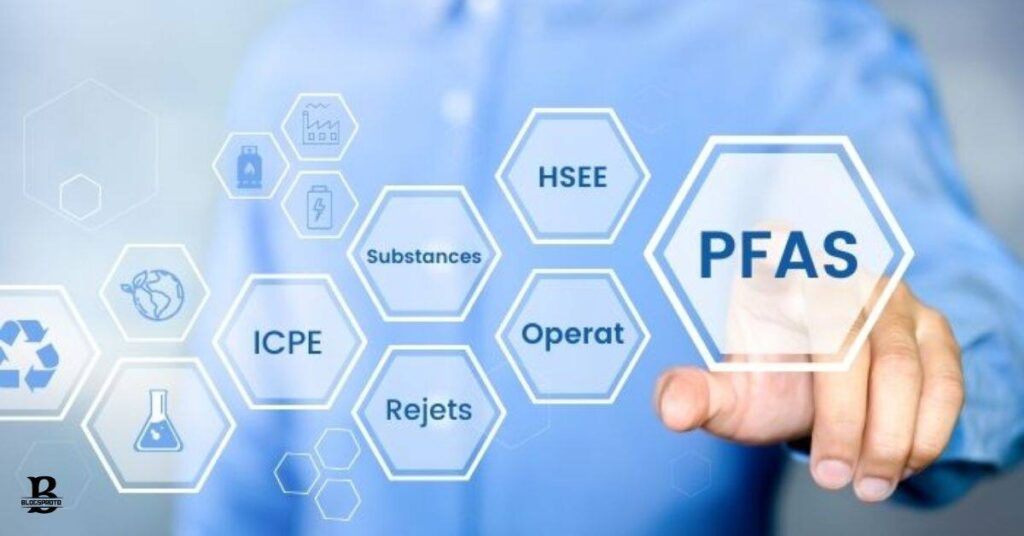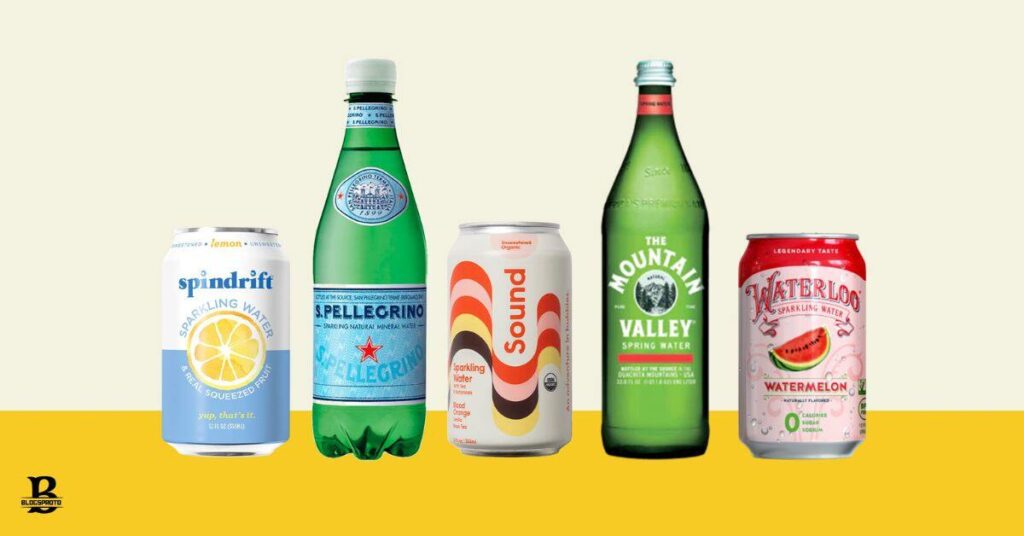Sparkling water seems like a healthy choice. But it might not be as safe as you think. PFAs synthetic compounds can sneak into your bubbly drink from plastic bottles. These chemicals, linked to health issues like liver damage and thyroid disease are a growing concern.
Many sparkling water brands have PFAs as recent studies reveal. Big companies like Pepsi and Coca-Cola are testing their products to find PFAs and look for safer packaging. But smaller brands are also stepping up advertising their PFA-free status.
It is not just sparkling water PFAs are also found in non-carbonated bottled water. And carbonation might bring another worry about heavy metals like lead. Until regulations catch up being informed and proactive can help you choose safer drinks for your health.
Understanding PFAs in Sparkling Water
Have you been gulping down sparkling water, thinking it’s a healthier alternative to sugary sodas? You may want to reconsider your beverage choice after learning about PFAs – a class of synthetic compounds found in many bottled waters including fizzy varieties.
PFAs or per- and polyfluoroalkyl substances, are a group of human-made chemicals widely used in numerous consumer products due to their remarkable ability to repel water, oil, and stains. However, mounting scientific research suggests that chronic exposure to these chemicals may be linked to various concerning health issues. such as liver damage thyroid disease and even some cancers.
While carbonation itself doesn’t contain PFAs, the plastic bottles and packaging materials used for many sparkling waters could potentially leach these chemicals into your refreshing beverage. This means that every sip of your favorited fizzy drink might be accompanied by an unwelcome dose of PFAs.
Carbonated Water

Before we dive into the specifics of PFAs in carbonated water. It is important to clarify that the carbonation process itself doesn’t introduce these chemicals. The real culprit lies in the plastic bottles and packaging materials used to contain the bubbly goodness.
PFAs in Carbonated Water
A recent study conducted by researchers analyzed a total of 17 different carbonated water brands, and the results were eye-opening. PFAs were detected in a staggering 15 out of the 17 brands tested. The levels of these compounds ranged from a seemingly insignificant 0.01 parts per trillion (ppt) to a more concerning 18.85 ppt.
While these numbers may seem minuscule, experts argue that there’s no safe level of PFA exposure. As these chemicals have been shown to bioaccumulate and persist in our bodies for years potentially leading to adverse health effects.
Read this blog : Wellhealthorganic.Com Easily Remove Dark Spots Lemon Juice
Brands’ Responses and Actions
As awareness of the potential risks associated with PFAs in bottled waters grows major beverage companies like Pepsi (Aquafina) and Coca-Cola (Smartwater) have pledged to test their products and explore alternative packaging solutions that are PFA-free.
Additionally, some smaller brands have seized the opportunity to tout their PFA-free status as a selling point, catering to the increasing consumer demand for healthier and more environmentally conscious products.
Non-Carbonated Water
It’s important to note that the presence of PFAs isn’t limited to just sparkling waters. In fact, a study conducted by Consumer Reports found that over 30% of the non-carbonated bottled waters tested contained detectable levels of PFAs, including popular brands like Evian and Dasani.
PFAs in Non-Carbonated Water
The levels of PFAs detected in non-carbonated bottled waters varied, but some samples exceeded 10 ppt, which is a concerning level according to health experts. This highlights the fact that the PFA issue extends beyond just the realm of fizzy waters and affects the entire bottled water industry.
Heavy Metals and Safety Concerns
In addition to the potential PFA contamination, studies have revealed that sparkling waters can contain higher amounts of heavy metals like antimony and lead compared to their non-carbonated counterparts. The culprit behind this alarming finding? The bottle linings that can dissolve under the pressure exerted by the carbonation process, leaching these heavy metals into the water.
Health Implications

The potential health implications of long-term PFA exposure are far-reaching and concerning. These chemicals are known to bioaccumulate and persist in our bodies for years, potentially leading to a range of adverse effects:
- Increased Cholesterol Levels: Studies have linked PFA exposure to elevated levels of cholesterol, which can contribute to cardiovascular disease risk.
- Reproductive and Developmental Issues: PFAs have been associated with reduced fertility, pregnancy complications, and developmental delays in children.
- Weakened Immune System: Exposure to these chemicals may impair immune function, making individuals more susceptible to infections and illnesses.
- Hormone Interference: PFAs can interfere with the normal functioning of hormones, potentially leading to endocrine disruption and related health issues.
- Increased Cancer Risk: Some studies have suggested a potential link between PFA exposure and an increased risk of certain types of cancers, including kidney and testicular cancer.
Given the widespread use of PFAs in various consumer products, it’s crucial to minimize exposure from all sources, including our drinking water.
“We understand the importance of providing our customers with safe, high-quality beverages they can trust. That’s why we’ve invested in cutting-edge technology and testing protocols to keep our products PFA-free.”
The Current State of PFAs Regulations
While the Environmental Protection Agency (EPA) issued health advisories for two common PFAs (PFOA and PFOS) in 2022, comprehensive regulations specifically addressing PFAs in bottled waters are sorely lacking.
Currently, it’s up to manufacturers to voluntarily test and disclose PFA levels in their products. This lack of a standardized regulatory framework leaves consumers in the dark about the potential presence and levels of these concerning chemicals in their bottled waters.
How to Check PFAs Levels in Sparkling Water?
Unfortunately, most brands do not publicly share their PFA testing data, making it challenging for consumers to make informed decisions. However, there are online resources that can provide some insights.
One such resource is the Environmental Working Group’s (EWG) Guide to PFAs ([https://www.ewg.org/pfaschemicals/](https://www.ewg.org/pfaschemicals/)), which crowdsources available test results from various sources. While not comprehensive, this guide can offer a glimpse into the PFA levels detected in different bottled water brands.
Top 5 Sparkling Water Brands With Low PFAs Levels
Based on the limited data available, here are some sparkling water brands that have tested in the lowest ranges for PFA levels:

- Polar (0-0.2 ppt)
- Zevia (<0.5 ppt)
- La Croix (<1 ppt)
- Spindrift (<1 ppt)
- Bubly (<1.5 ppt)
It’s important to note that testing can vary by batch and bottle, so these figures should be considered rough estimates. Additionally, as more brands commit to testing and transparency, the rankings may shift.
What Can Consumers Do?
Until stricter regulations are implemented and enforced, being an informed and proactive consumer is crucial when it comes to minimizing PFA exposure from bottled waters. Here are some steps you can take:
Check for PFA Disclosures
Look for any information or disclosures regarding PFA testing and levels on bottled water labels. If a brand claims to be PFA-free, verify their claims through reputable sources.
Use PFA-Removing Water Filters
Invest in water filters that are certified to remove PFAs from your drinking water. This can help reduce exposure from both bottled and tap water sources.
Switch to PFA-Free Bottles or Cans
Consider switching to bottled waters packaged in PFA-free materials, such as glass or aluminum cans, to minimize potential leaching.
Contact Brands and Advocate for Transparency
Reach out to bottled water companies and express your concerns about PFA testing and disclosure. Consumer demand can drive positive change in the industry.
Stay Updated
Follow reliable sources like the EWG and Consumer Reports for the latest developments and updates on PFA regulations and testing efforts.
By being an informed and engaged consumer, you can not only protect your health but also contribute to the push for greater transparency and accountability in the bottled water industry.
The Impact of PFAs on Communities
While the health implications of PFA exposure are concerning on an individual level, these chemicals can also have far-reaching impacts on entire communities. One stark example is the ongoing water crisis in Pittsboro North Carolina.
In this small town PFA contamination from a nearby manufacturing facility has rendered the municipal water supply unsafe for consumption. Residents have been advised to use bottled water for drinking cooking and even brushing their teeth. As the levels of PFAs in the tap water exceed the EPA’s health advisory levels.
The impact on Pittsboro’s residents has been significant, both financially and emotionally. Many families have struggled to afford the added expense of purchasing bottled water for all their household needs. While others have expressed frustration and anxiety over the potential health risks they may have already been exposed to.
The Role of Consumer Advocacy
While individual consumers can take steps to minimize their exposure to PFAs lasting change often requires collective action and advocacy efforts. Organizations like the Environmental Working Group (EWG) and the Natural Resources Defense Council (NRDC) have been at the forefront of raising awareness about PFAs and pushing for stronger regulations.
One way consumers can contribute to this cause is by supporting and amplifying the efforts of these advocacy groups. This can include signing petitions participating in awareness campaigns, and contacting elected officials to demand stricter regulations and increased transparency from bottled water manufacturers.
Resources & Further Reading
FDA PFA Testing Data: [https://www.fda.gov/food/chemicals/and-polyfluoroalkyl-substances-pfas] (https://www.fda.gov/food/chemicals/and-polyfluoroalkyl-substances-pfas)
Environmental Working Group Guide to PFAs: [https://www.ewg.org/pfaschemicals/] (https://www.ewg.org/pfaschemicals/)
Consumer Reports Bottled Water Study:
(https://www.consumerreports.org/bottled-water/arsenic-lead-found-in-bottled-water-products/)
Frequently Asked Questions
How do PFAs affect health?
PFAs may lead to liver damage, thyroid disease, and increased cancer risk with chronic exposure.
Is carbonation responsible for PFAs in sparkling water?
No, PFAs in sparkling water come from plastic packaging materials, not carbonation itself.
Are all sparkling water brands affected by PFAs?
Yes, studies show PFAs are detected in numerous sparkling water brands.
Can PFAs be found in non-carbonated bottled waters?
Yes, over 30% of non-carbonated bottled waters tested contained detectable levels of PFAs.
What can consumers do to minimize PFA exposure?
Consumers can check for PFA disclosures use PFA-removing water filters, and advocate for transparency in the industry.
Are there health risks associated with PFAs in drinking water?
Yes, PFAs may lead to increased cholesterol levels, reproductive issues, weakened immune system, and increased cancer risk.
Conclusion
Unveiling The Fizz reveals the hidden dangers of PFAs in sparkling water, shedding light on the potential health risks associated with chronic exposure. Despite carbonation itself being innocent, the plastic packaging poses a significant threat allowing PFAs to leach into the beverage. The article underscores the importance of informed consumer choices urging vigilance in checking for PFA disclosures and opting for safer packaging materials.
It calls for greater transparency and accountability in the bottled water industry and emphasizes the need for stricter regulations to protect public health. By understanding the risks and taking proactive measures to minimize exposure consumers can safeguard their well-being and advocate for safer drinking water standards. Knowledge is indeed power and armed with this awareness, individuals can navigate the sparkling water landscape with confidence and caution.

Maxwell Brooks, a prolific wordsmith on BlogsProto.com, navigates literary realms with grace. His prose dances through genres, captivating readers with tales that resonate, leaving an indelible mark on the digital literary landscape.











